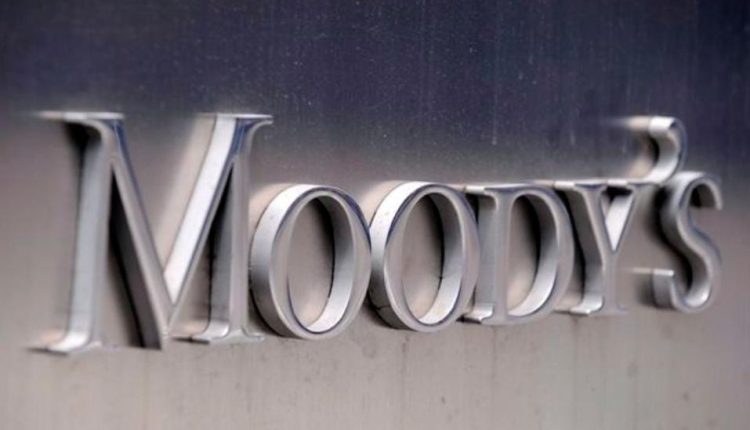Limassol 23 January 2024M
Moody’s Investors Service (Moody’s) has today affirmed all ratings and assessments of the five rated Egyptian banks, including the Caa1 long-term deposit ratings of National Bank of Egypt SAE (NBE), Banque Misr SAE (BM), Banque du Caire SAE (BdC) and Commercial International Bank (Egypt) SAE (CIB); and the B3 long-term deposit ratings of Bank of Alexandria SAE (BoA). As part of the same rating action Moody’s has changed the outlook on the banks’ long-term deposit ratings to negative from stable.
The rating action follows Moody’s decision to affirm Egypt’s Caa1 rating and change its outlook to negative from stable (please see “Moody’s changes outlook on Egypt to negative, affirms Caa1 ratings”, 18 January 2024, https://ratings.moodys.com/ratings-news/413802). The change in outlook to negative reflects increasing risks that Egypt’s credit profile will continue to weaken amid difficult macroeconomic and exchange rate rebalancing, despite continued fiscal consolidation efforts and official sector support.
Please click on this link https://www.moodys.com/viewresearchdoc.aspx?docid=PBC_ARFTL484626 for the List of Affected Credit Ratings. This list is an integral part of this Press Release and identifies each affected issuer.
RATINGS RATIONALE
— NEGATIVE OUTLOOK
According to Moody’s, the change to negative outlook from stable reflects primarily the rated banks’ sizable holding of sovereign debt securities, which links their creditworthiness to that of the government and constrain their standalone financial profile at the government rating. All five banks’ Baseline Credit Assessments (BCAs) of caa1 are at the same rating level of the government, and a potential weakening in the government’s credit profile will lead to a weaker credit profile for the banks. According to rated banks’ latest financial statements, their direct exposure to government securities stood at around 6.7x of regulatory capital for NBE, 3.5x for BM, 3.2x for BdC, 2.3x for BoA and 2.2x for CIB.
The negative outlook also captures broader foreign currency shortages, as well as the challenging operating conditions and resultant high asset risks, that could impact banks’ operations and exert renewed pressure on banks’ earnings, asset quality and foreign currency liquidity metrics. The increasingly challenging operating conditions, as well as the foreign currency shortages, and high interest rates and inflation, dampen consumer confidence, compromise borrowers’ repayment capacity and increase funding costs for the banks. In turn, these factors pressure banks’ earnings, asset quality and foreign currency liquidity metrics.
— RATING AFFIRMATIONS
The affirmation of the five Egyptian banks’ ratings reflects two contrasting dynamics. On one hand, the further deterioration in government debt affordability and rising external pressure have complicated Egypt’s macroeconomic adjustment, and expose Egyptian banks to solvency and liquidity tail risks as they are significantly exposed to the sovereign.
On the other hand, against these risks, the rating agency notes the banks’ resilient financial profiles so far, including their deposit-based funding profiles; strong local currency liquidity; stable profitability with the sector reporting return on average assets of around 1.2%; a capital adequacy ratio still comfortably above the minimum requirements; and reported non-performing loans (NPLs) at 3.3% of gross loans.
BANK-SPECIFIC RATING DRIVERS
NATIONAL BANK OF EGYPT SAE
NBE’s Caa1 long-term deposit ratings reflect its sizable holding of sovereign debt securities, which links its creditworthiness to that of the government and effectively caps the bank’s rating to that of the sovereign. As of June 2023, government securities accounted for around 44% of NBE’s total assets, while the bank is also faced with elevated foreign currency liquidity pressures, a challenging operating environment and modest capital buffers. These dynamics outweigh the more positive credit drivers that include NBE’s established domestic franchise as the country’s largest bank, its stable local-currency deposit funding base, moderate profitability and the low level of reported NPLs, at 0.7% of gross loans as of December 2022.
— BANQUE MISR SAE
BM’s Caa1 long-term deposit ratings reflect its sizable holding of sovereign debt securities – at around 32% of total assets as of September 2023 – which links its creditworthiness to that of the government and effectively caps the bank’s rating to that of the sovereign. The bank is also faced with elevated foreign currency liquidity pressures, a challenging operating environment and modest capital buffers. These dynamics outweigh the more positive credit drivers that include BM’s strong funding and liquidity in local currency, with cash and interbank balances accounting for 25% of total assets, moderate profitability and the low level of reported NPLs, at 2.4% of gross loans as of September 2023.
— BANQUE DU CAIRE SAE
BdC’s Caa1 long-term deposit ratings are on par with its caa1 BCA and Egypt’s Caa1 sovereign rating, given BdC’s high exposure to the Government of Egypt, with around 29% of assets invested in government securities as of September 2023, which links the bank’s credit profile to that of the government. Nonetheless, the bank maintains a resilient profitability; a stable, predominantly deposit-based, funding structure and high local currency liquidity buffers; while numerous capital injections in recent years have strengthened the bank’s capital. Asset risks remain high in view of the challenging operating conditions, while the bank is also exposed to the broader systemic foreign currency liquidity pressures.
— COMMERCIAL INTERNATIONAL BANK (EGYPT) SAE
CIB’s Caa1 long-term deposit ratings and caa1 BCA are constrained by the government’s rating, given the bank’s high exposure to the Government of Egypt. The latter is in the form of Egyptian government securities, equivalent to around 25% of CIB’s total assets as of September 2023. Nonetheless, the bank maintains strong capital buffers (with tangible common equity/ risk-weighted assets of 15.9% as of September 2023), resilient profitability with return on tangible assets of 3.7%, and stable deposit based funding profile and good liquidity. CIB also maintains high accumulated balance sheet provisions at 11.8% of gross loans, more than double its NPLs of 5.1% of gross loans as of September 2023. Asset risks remain, however, high in view of the challenging operating conditions, while the broader economy is also faced with foreign currency liquidity pressures that can also indirectly impact CIB.
— BANK OF ALEXANDRIA SAE
BoA’s B3 long-term deposit ratings reflect the combination of (i) the bank’s caa1 BCA and (ii) one notch of uplift from our assessment of a moderate probability of parental support from INTESA SANPAOLO S.P.A. (Intesa Sanpaolo, Baa1 stable, baa3), in case of need. BoA’s BCA is constrained at caa1, reflecting the bank’s high exposure (27% of total assets as of September 2023) to the Government of Egypt, but also captures the bank’s stable funding and high liquidity buffers (cash and interbank balances make up 33% of total assets); high capital buffers; and resilient profitability, with a 3.5% return on tangible assets. BoA’s ratings also reflect elevated asset risks, partly in view of the challenging operating conditions and broader systemic foreign currency liquidity pressures that can also indirectly impact BoA.
FACTORS THAT COULD LEAD TO AN UPGRADE OR DOWNGRADE OF THE RATINGS
Upward pressure on the banks’ ratings is limited, as indicated by the negative outlook. A ratings upgrade would require a material strengthening of the operating environment and in the government’s credit profile, and provided that the banks maintain their resilient financial performance and adequate foreign currency liquidity.
Egyptian banks’ ratings could be downgraded if the sovereign rating is downgraded, given the banks’ sizeable holdings of sovereign debt securities. The banks’ BCAs could also be downgraded if banks are faced with more acute foreign currency liquidity pressures, or a rise in problem loans and/or rising funding costs that materially reduce their profitability and capital metrics from current levels.
PRINCIPAL METHODOLOGY











